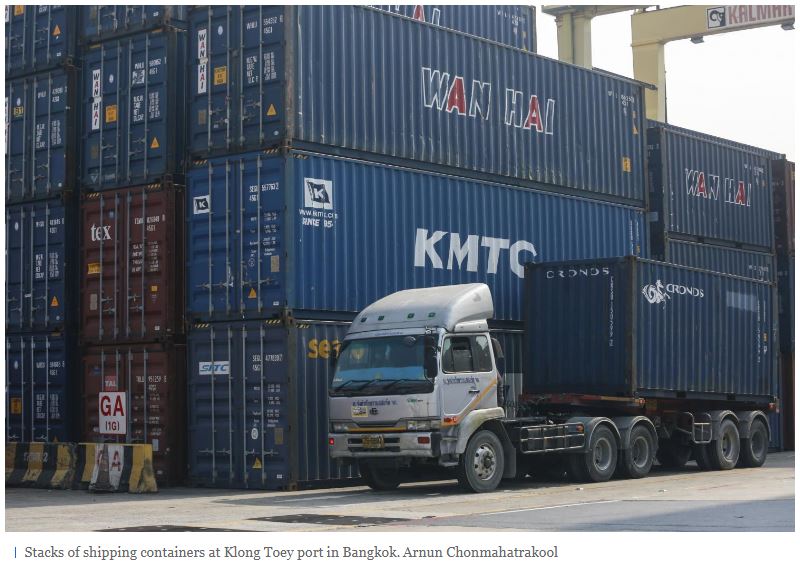Thailand: Export growth rate set to ease next year
Thailand’s export growth is forecast to slow to just 0.2-4.8% next year, tallying US$262-275 billion.
Negative factors weighing on the sector include Omicron variant outbreaks, rising inflation among trading partners, and more stringent measures to contain Covid-19 infections in China.
Other challenges include container shortages and high freight rates, increasing world crude oil prices and potential supply chain disruption, according to Aat Pisanwanich, director of the Center for International Trade Studies at the University of the Thai Chamber of Commerce (UTCC).
“According to the university’s study, Thai exports have a 70% possibility of increasing by 4.8% next year to $275 billion,” he said. “But the projection assumes Omicron infections are not severe.”
If the spread of the Omicron variant becomes serious and unabated in 2022, Thai exports are expected to grow by 0.2%, but the possibility of such a scenario is only 30%, said Mr Aat.
On Monday, the Commerce Ministry projected this year’s outbound shipments to grow by 16% to US$268 billion (about 8.5 trillion baht), boosted by healthy results in the first 11 months of 2021 when Thai exports expanded by 16.4% from the same period of 2020 to $246 billion.
For 2022, the Commerce Ministry forecasts export growth of 3.5-4.5%, reaching $278-280 billion.
Mr Aat said Thailand’s export growth in 2022 will be driven largely by the economic recovery in Thailand’s trading partners, a weakening baht at 32-33 baht per US dollar, increasing numbers of vaccinations, and rising demand for healthcare and medical supplies.
He said the university is closely monitoring Omicron infections and a potential trade war between the US and allies against China based on the Uyghur Forced Labor Prevention Act that President Joe Biden is considering.
The implementation of the Regional Comprehensive Economic Partnership (RCEP) early next year may affect Thai exports to a certain extent, he said.
Mr Aat warned that the free-trade deal, once implemented, is expected to result in a higher trade deficit for Thailand, particularly with China, Japan, South Korea, Malaysia, and Brunei.
In 2021, Thailand’s exports to RCEP countries totalled $144 billion and Thailand’s imports were $170 billion, resulting in a trade deficit of $25.5 million.
Over the past 10 years, the main Thai markets in RCEP have been China, Japan and Vietnam, with more than 50% of exports, while 60% of Thai imports come from China, Japan, and Malaysia.
Mr Aat said another factor to monitor is the impact of the Laos-China high-speed train project, which opened on Dec 3, 2021. The new railway may pave the way for an influx of Chinese imports such as fresh fruit, vegetables and other products, resulting in a higher trade deficit with China.
Mr Aat proposed that Thailand speed up its investments in building infrastructure such as distribution centres, dry ports, or a second bridge to link Nong Khai and Laos.
The country should also have a traceability system for agricultural export products to build up consumer confidence, he said.
According to Mr Aat, Thai exporters should prepare for the Carbon Border Adjustment Mechanism that the EU plans to introduce in 2023 to collect a tariff from carbon-intensive products.
Source: https://www.bangkokpost.com/business/2235843/export-growth-rate-set-to-ease-next-year


 English
English




